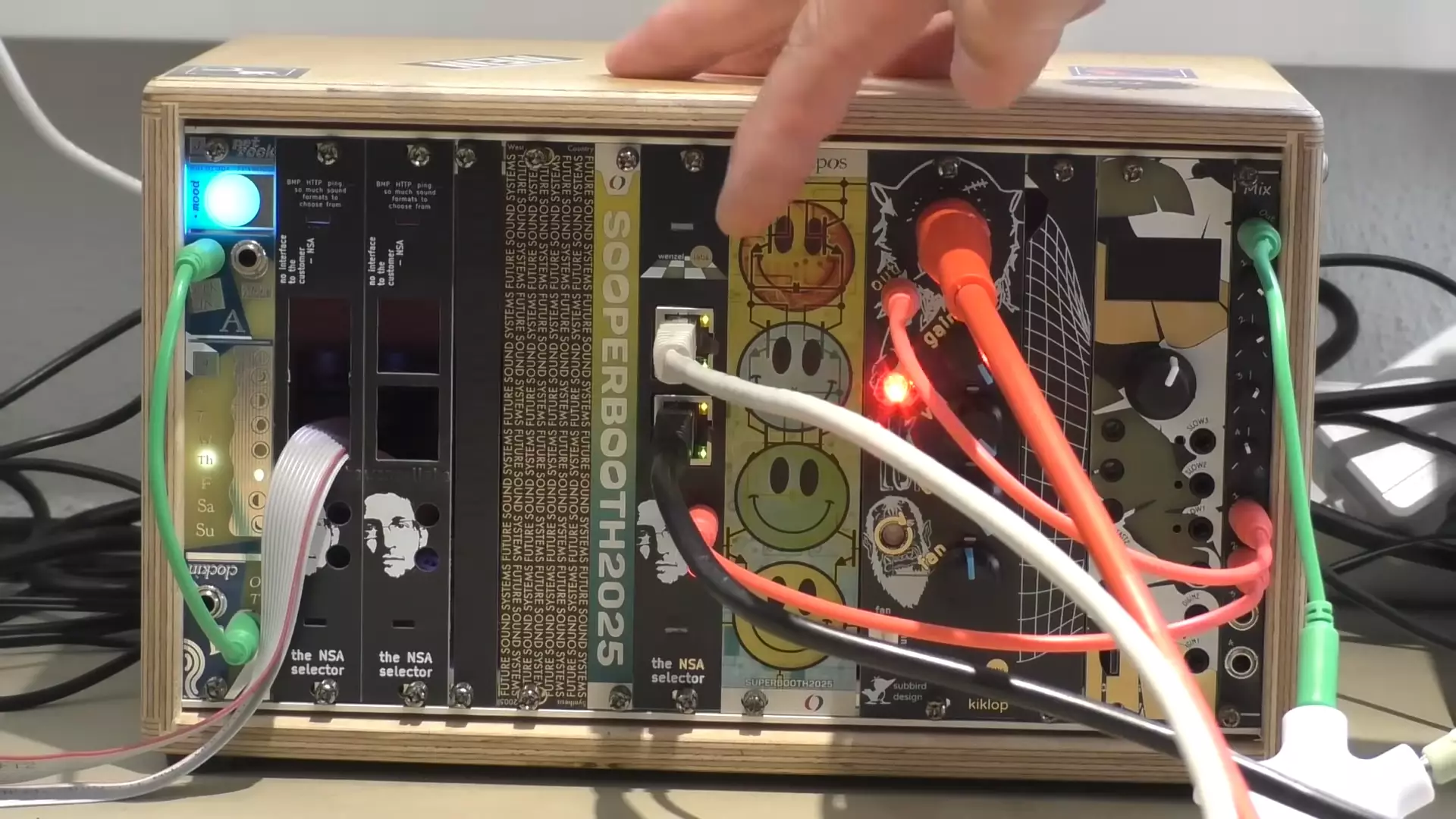In the realm of sound creation, innovation often flourishes at the intersection of the unexpected. The recent emergence of the NSA Selector—a Eurorack module that taps into network traffic—embodies this spirit of audacious experimentation. Unlike traditional synthesizers aimed at perfection and clarity, this device embraces chaos, turning the raw, unfiltered pulses of digital data into a soundtrack of unpredictable noise. Such a concept disrupts conventional notions of musicality, proposing instead a form of sound art rooted in technological transparency and randomness. It challenges enthusiasts to reconsider their relationship with both sound and the invisible flows of information that shape our digital lives.
This inventive approach shines a spotlight on the misunderstood artistry of noise. Electronic music has long traded on the evocative power of distortion, feedback, and unconventional sources. The NSA Selector elevates this improvisational ethos to a new level by literally “listening” to the web’s traffic—be it Google Maps, gaming pages, or image loads—and translating it into sonic textures. This raw, unrefined process emphasizes the beauty of imperfection, forcing users to accept that the most fascinating sounds often emerge from the most chaotic sources. In doing so, it positions itself as a protest against sanitized, digitally polished music, asserting that there is genuine artistry in disorder.
From Playful Curiosity to Artistic Statement
What makes the NSA Selector particularly compelling is not just its technical concept but its cultural implications. Its creators, Wenzellabs, are not seeking to craft pleasant sounds—they are showcasing a new playground for sonic exploration. The very idea that network traffic, usually invisible and intangible, can be transformed into audio underscores the potential for technology to serve as both a tool and a muse. When browsing Google Maps or loading a digital game triggers a sudden screech or drone, it becomes a visceral reminder of the data that quietly fuels our digital existence.
This approach invites a deeper reflection on how digital artifacts influence our perception of reality. The sounds generated by the NSA Selector act as a kind of auditory fingerprint of the internet’s activity. For some, this may evoke discomfort; for others, it sparks curiosity and artistic inspiration. The device exemplifies an aesthetic of noise—an embrace of the imperfect, the unpredictable, and the raw—challenging us to find beauty where convention dictates there should be none. It’s an affirmation that the boundaries of music are constantly being pushed outward, and perhaps it’s time to reconsider what constitutes meaningful sound.
The Artistic Potential in Digital Noise
While the sounds produced by the NSA Selector might not be immediately pleasing, dismissing them as mere noise overlooks their creative potential. Experimental musicians and sound artists have long explored the fringes of auditory experience, and this device adds a fresh, technologically driven dimension to that exploration. By manipulating images, monitoring network activity, or even simply browsing the web, users can generate a diverse palette of sounds that are as unique as their digital footprint.
Moreover, the device reflects a broader cultural shift towards embracing unpredictability and imperfection. In an era obsessed with perfect algorithms and curated digital experiences, the NSA Selector reminds us of the inherent beauty of messiness. Its capacity to produce a waveform that responds dynamically to network activity exemplifies a form of live, generative art—one that evolves with the environment and resists static forms. This challenges traditional notions of musical composition, which often prioritize control and structure over chaos and spontaneity.
Ultimately, the NSA Selector embodies a rebellious spirit—a deliberate departure from the polished, predictable sounds that dominate mainstream music. It champions a form of artistic expression rooted in the raw data of modern life, inviting creators and audiences alike to revel in the unpredictable symphony of digital chaos. In doing so, it positions itself not merely as a novelty but as a provocative statement on the limitless boundaries of sound and creativity in the digital age.

